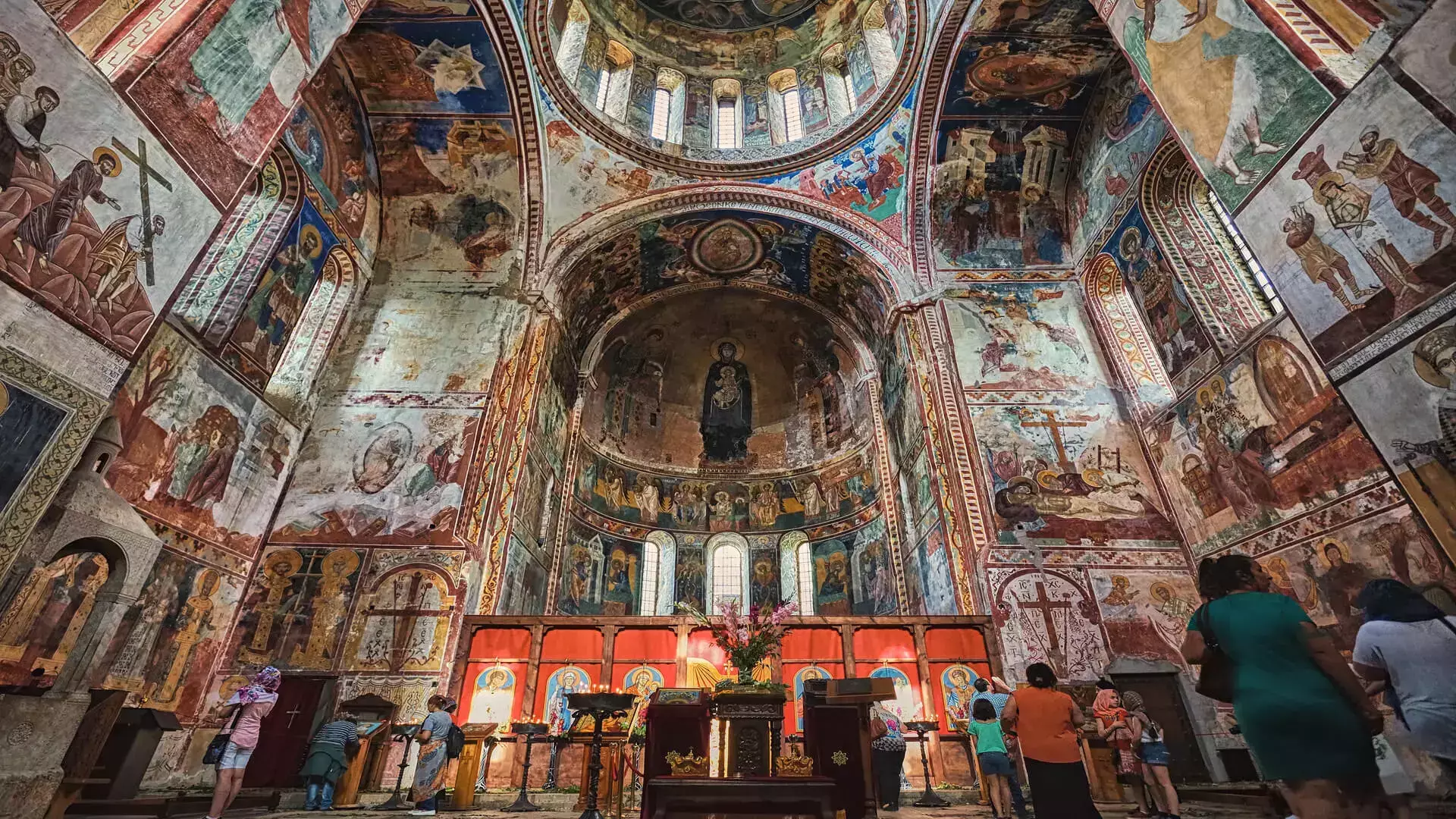Gelati Monastery
Located just eleven kilometres away from Kutaisi, this monastery complex was a well-known centre for medieval culture and education whose reputation often saw it referred to as “the new Athens” and “the second Jerusalem”.
A number of buildings are located within the complex, such as the Churches of St. George and St. Nicholas, a bell tower, and the academy in which they once taught geometry, arithmetic, music, philosophy, rhetoric, grammar, and astronomy.
The construction on Gelati Monastery was started by the Georgian king David IV the Builder in 1106, and by 1130 it was flourishing, welcoming the students from all around the region. The King didn’t witness his big project being finished - he passed away in 1125. Prior to his death he asked in his testament to be buried under one of the gates, at the entrance of the cathedral, so that all who came to pray here would walk on his grave, and king’s wish was fulfilled. It is said that the king chose this place deliberately to show his humility.
In addition to its historic significance, Gelati is an outstanding example of Georgian monumental art and mosaics. One particularly remarkable mosaic is the world-class, 12th-century mosaic of the Virgin Mary holding the baby Jesus, and the archangels Michael and Gabriel. There is also a fresco of David the Builder here.
The famous gates of Ganja (a city in Azerbaijan) are also kept within the monastery. After a terrible earthquake struck the city in 1139, King Demetre I took the opportunity to salvage the masterful pieces of craftsmanship and bring them back to Georgia. The surviving gate is now built into the walls of Gelati Monastery.
Cookie Policy

